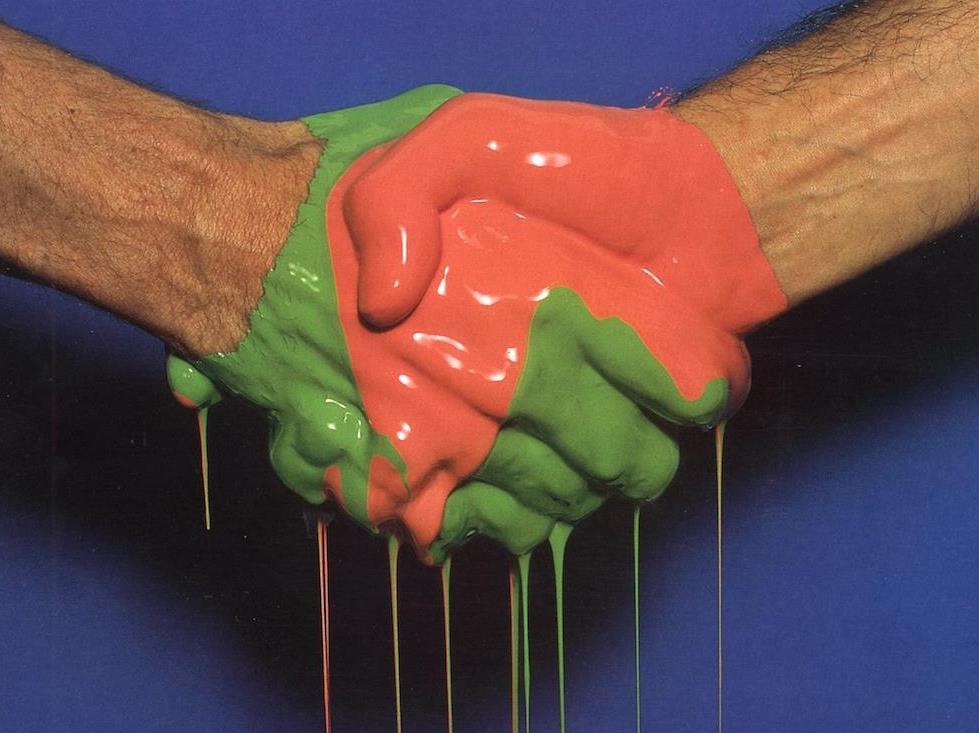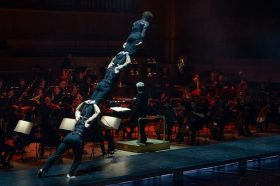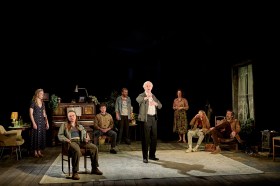Image: Robert Boyd via The Great God Pan is Dead
The challenge for every arts organisation and artist is finding the right business partner. And for business, it has to make sense. There has to be a synergy between the artists and the business, otherwise there’s no point doing it. Business partners have to speak the same language as the stakeholders behind the artistic event. That includes audiences.
Failure to do that is disastrous. Synergy and collaboration with stakeholders are the two critical factors behind finding the right business partner.
There have been some disastrous examples of arts institutions that have fallen out with business partners. Consider for example the pressure BP is under over its over its sponsorship of the arts in the UK. There have been protests over its patronage of the Royal Opera House and a legal row around its support for the Tate galleries. The oil giant gives £2m a year to four of the country’s top cultural institutions. Environmental groups say this is “inappropriate” given its involvement in fossil fuels, which intensify global warming.
Another example is the uproar by artists over Transfield’s partnership with the Sydney Biennale which saw it contributing about six per cent of the Biennale’s $10 million budget. Artists were talking about the Biennale because publicly-listed Transfield Services also manages facilities at Australian asylum-seeker detention centres in Nauru and Manus Island in Papua New Guinea.
Karen Mahlab who runs ProBono Australia says arts organisations have to ask serious questions when they get into bed with business.
“It goes to general principles of understanding where you’re going as an organisation, what outcomes the business that wants to partner with wants and what you both want out of the relationship,’’ Mahlab says.
“There is also a consideration of size and working out what’s going to be expected of you from an organisation that might be a lot be a whole lot bigger than you. If we’re taking about community based arts organisations, that definitely a consideration. The corporate might not realise what they are asking of you, that administratively they are asking for a lot.
“Also, there has to be consideration of the value of the band and any reputational risk that might be come from being associated with a corporation.”
Business and arts partnerships work where the artists, audience and business are on the same page. One of the best examples is the partnership between the Transport Accident Commission and the Falls Festival, one of Victoria’s biggest music festivals held every year on farmland behind Lorne in the Otway Ranges each New Year. The festival attracts 17,000 young people aged between 18 and 25. Many of this group engage in high risk behaviours. Throughout the three day event, the TAC puts up a message “Your Mate’s Life Is In Your Hands” both on site and in the lead up to the event. At end of the festival when everyone is going home, the TAC provides complimentary breath testing and water at all exit points. For its part, the Falls Festival puts out the same message as the TAC and also features a bright orange bus, Vanessa, as one of its star attractions. A former booze bus, it is the place where festival goers can chill out on a beanbag, get some free water or coffee, get their breath tested and generally just recharge. The bus comes fully equipped with a legitimate breath testing facility, so you can check out how high people’s blood alcohol count is. It also offers editing facilities for people wanting to edit footage of the events at the festival.
The partnership between TAC and the Falls clearly shows what happens when the artists and their audiences are moving in the same direction as the business partner. For the TAC, the expenditure on the Falls is far less than the millions of dollars it would otherwise spend on advertising
Research undertaken by the Australian Council and the Business Arts Foundation (now Creative Partnerships Australia) found that the right business partner is the one where there is some sort of brand alignment. “These companies prefer to align their brands with sponsorship sectors that help to convey key brand messaging, for example, health promotion aligned with sports sponsorship These companies prefer to align their brands with sponsorship sectors that help to convey key brand messaging, for example, health promotion aligned with sports sponsorship.”
Put simply, working with the arts allows the company’s goods and services to be seen as interesting, innovative and fresh.
And most of the businesses preferred the partnership model to sponsorship because that tended to have a greater impact on the organisation. It was seen as a better way to engage staff and bring a certain vibrancy to the workplace. “Staff engagement – arts partnerships can have a tangible impact on employees and the working environment. The arts have the ability to bring vibrancy and creative energy to the workplace, encouraging people to think outside the square and consider different perspectives.”
Companies also saw it as a way to bring creativity into their organisation and also to tap into new markets. For business, the arts is seen as a good way to engage clients with exclusive events, building the relationships with the market.
That is the pitch arts organisations and artists need to bring business. They need to look at areas where there is brand alignment, and opportunities to create new markets for the business. They need to show how their art can engage their clients and draw them closer to the business. Just as importantly, they need to demonstrate that the arts partnership is cost effective for the business and could save them money that they would otherwise spend on marketing, public relations and advertising.
Finding the right business partner means identifying common ground. At the same time, the stakeholders need to be taken into account. Once all that is done, there can be a real and lasting partnership.



_Encounters-in-Reflection_Gallery3BPhoto-by-Anpis-Wang-e1745414770771.jpg?w=280)

